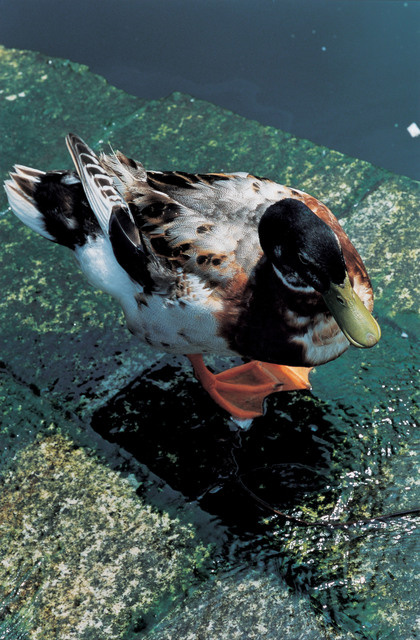Lush green landscapes, geometrical statues, A-list celebrities – a career in photography sure comes with a lot of perks. Every time we take a picture that’s just a little better than our regular selfie, the photographer in us comes to life. While some tend to keep theirs in the backseat, others give in to it and hence, the tale of their journey to being a famous photographer begins.
It is a thrill to climb up to the peak of the tallest mountain and click a picture that gets published in a nature and wildlife magazine. For some, capturing the bravery of soldiers at war in a land saturated with terror is their high.
Sitting in the comfort of our homes in our soft and warm jammies, sipping early morning coffee, seeing a picture of children stuck in war zone goes no further than a good conversation starter. But is that all there is to that picture? Was it just the kid who had to face the wrath of a bomb that unfortunately struck that building in that locality? Or do we sometimes forget that the photographers are just as vulnerable? And there are times that this vulnerability gets the better of them. War zones get dangerous and the option of leaving a war they are not a part of, but still are in the middle of, gets really tempting.
Even the portrait of the snow-capped mountains hanging on our living room wall proved too risky for a photographer who had to stay in a climate with temperature way worse than our refrigerators to get the perfect shot.
While photography proved to be a bit too much for some, others couldn’t help but come back even if it literally one day kills them.
Here are stories of 4 of the world’s most famous photographers who gave up photography for various reasons. While some came back, others did not.
● Brian Duffy
Born in 1933 in the United Kingdom, Brian Duffy began by freelancing for Harper’s Bazaar in 1955. Through the years, he achieved great heights shooting for The Sunday Times, French Elle, Glamour Magazine, Esquire and many more. He was a part of the ‘Black Trinity’ of the swinging sixties along with David Bailey and Terence Donovan.
One of his greatest achievements is the very famous David Bowie zig-zag album cover of the latter’s album, Aladdin Sane, whose name also was suggested by Duffy when he misread ‘A Lad Insane’ for what the album name later became.

Image sourced from Gallery Vassie
In his later years, Duffy’s work was centred around commercials and advertisements. Although he created award-winning campaigns for Benson & Hedges and Smirnoff, he was not satisfied. This shift from capturing fun-filled, out-in-the-street pictures to boring, mechanical, following-authority ways of commercial shoots made him uncomfortable. With all this pent-up tension, he lost his cool when one of his workers told him that they’d run out of toilet paper in the office. In response, Duffy sent his staff home and burned the negatives to most of his life’s work. Some were salvaged when the neighbours reported the smoke.
Although Duffy never intended on coming back to photography, he, on his son’s demands, held an exhibition of his remaining pictures in 2009.
● Lynsey Addario
Addario did not take any courses in photography, yet she started professional photography in 1996 in Argentina and since then she has worked as a war photographer in Afghanistan, Iraq, Haiti, Middle East, Africa, Pakistan and Israel amongst others. Her work is mostly published in Times Magazine, The New York Times and The National Geographic.
Her work has gained her awards and recognition around the world. She was awarded the Infinity Award in 2002 by the International Centre of Photography. She has also received multiple grants and scholarships including the Getty Images Grant for Editorial Photography in 2008 and the MacArthur Fellowship in 2009. Columbia University presented her with the prestigious Pulitzer Prize for International Reporting in 2009.
In a span of 21 years, while on the field, Addario has been kidnapped, been in an accident, abused and made to do unspeakable things. But her breaking point came in 2011 in Libya when she was kidnapped by Gaddafi’s troops. She was assaulted with punches in the face and was groped repeatedly by many. The physical pain and the mental torture intensified being blindfolded for 6 days made her rethink about her job. It made her think of her husband and her friends back home. Along with the others that were captured, Addario contemplated whether putting themselves at stake was worth the reporting. Although, after being released, Addario continued her work as a conflict photographer and did what she promised she would if she ever got out, give her husband a baby.

Image sourced from Lynsey Addario
● Takuma Nakahira
Takuma Nakahira was one of the most celebrated photographers in Japan. After graduating with a degree in Spanish, Nakahira started working as an editor for an art magazine in 1963. In his initial days, he published his work under the pseudonym, Akira Yuzuki before resigning from his editorial post and embarking on a solo career in photography.
Nakahira received critical acclaim for his first photobook, For a Language to Come. This book has often been referred to as “a masterpiece of reductionism”. His style of photography redefined the profession in Japan in the 1960s. Better known as the master in the ‘are, bure, boke’ (grainy, blurry, out-of-focus) style, Nakahira’s photography presented Japanese society in a very poetic way. A fair example of this can be seen in his book where he says that a ‘tree’, when spoken or written, is a tree in general, but when it comes to pictures every ‘tree’ will be specific.

Image sourced from The Aki Gallery on Artsy
However, all this changed when he visited the Paris Biennale in 1971 and looked at his pictures and felt nothing. He felt as if he had lost his individuality and his pictures would eventually go down in history as nothing but clichés. He described his feelings as that of “hollowness” and “despair” and that maybe he overdid with finding poetry in every shot he took. These feelings, alas, resulted in him burning most of his negatives. The ones left were displayed in New York in 2012 in an exhibition and various other galleries throughout the years.
● Kevin Carter
Kevin Carter was a South African photographer who took a picture during the 1993 Sudan famine that ended up winning the Pulitzer Prize For Photography. You may have seen this picture:

When he took the picture, he thought of his daughter. He couldn’t believe what was happening to these people and remembered his family back at home. Soon, the picture became a metaphor for African poverty. The next year in 1994, 4 months after receiving the prize, haunted by terrible memories, Carter committed suicide, the pain it caused had finally become too much for him.
Have the thoughts of giving up photography ever crossed your mind? Did you give in to it? Or does your passion outweigh the pain? Let us know.
This blog can be addictive. We know you must be craving more so here’s more:
This article was written by Sienna Thibault. If you want to contact her for feedback, send her an email.






